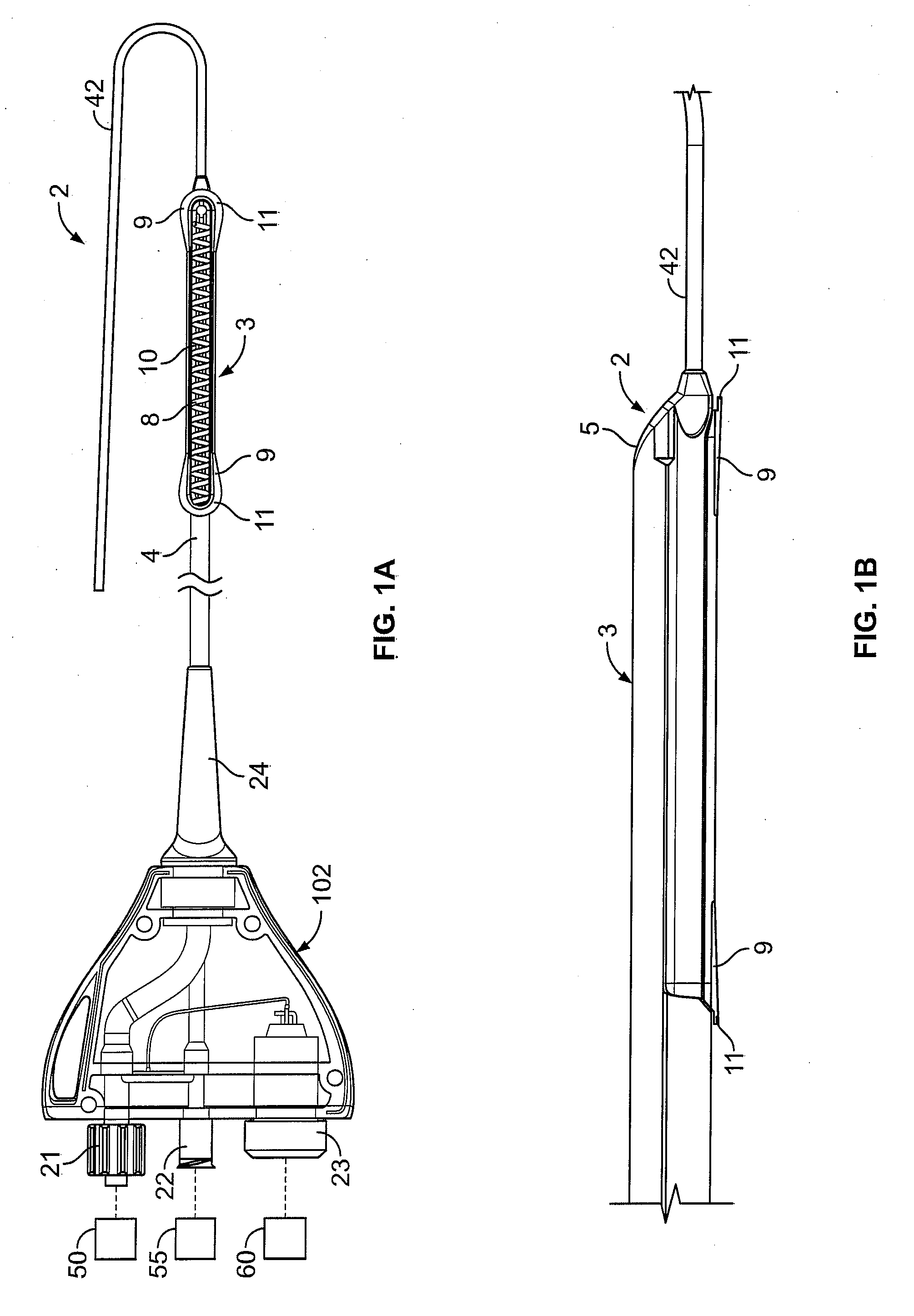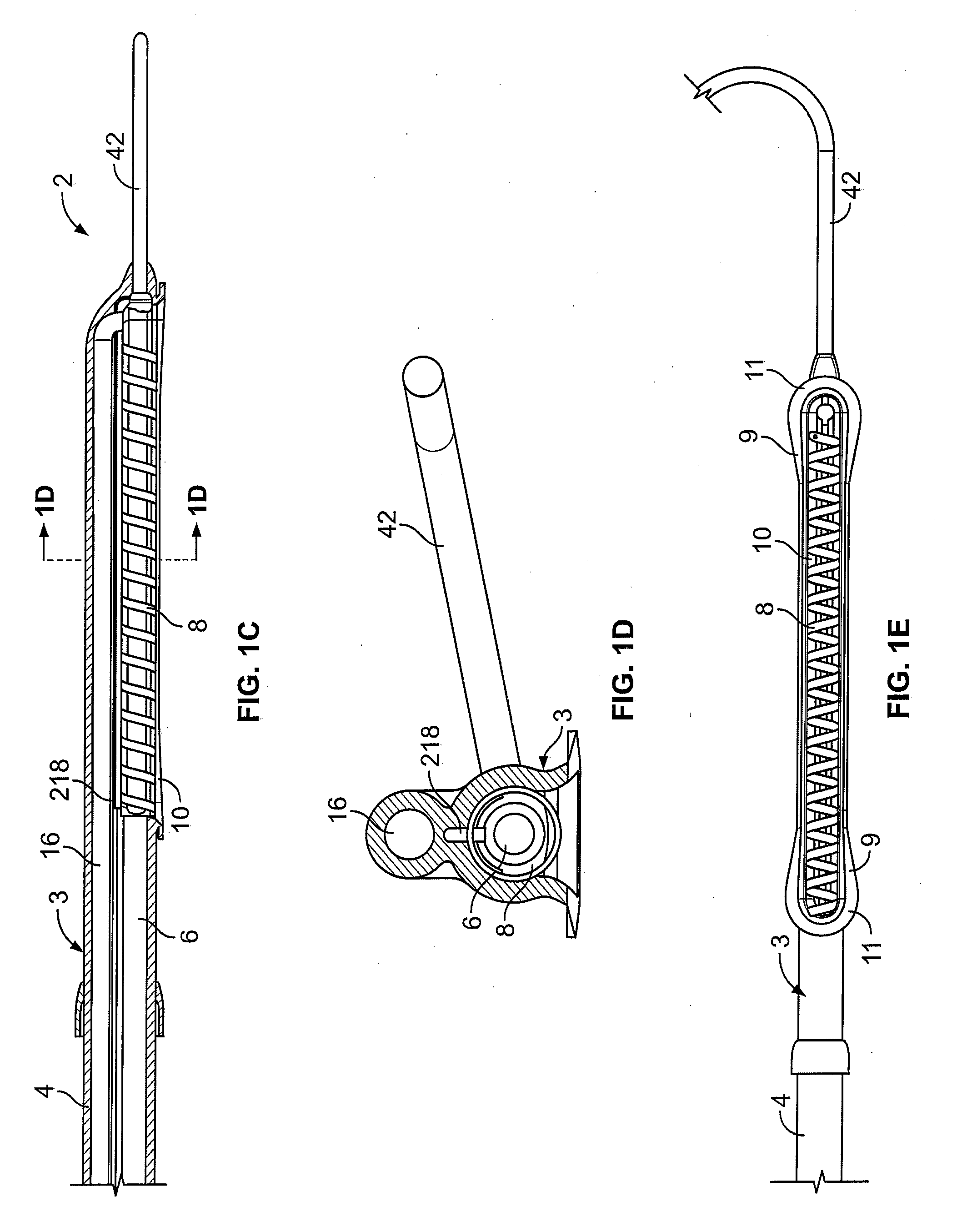Vacuum coagulation probes
a coagulation probe and vacuum technology, applied in the field of vacuum coagulation probes, can solve the problems of inability to direct the coagulation of precise regions of soft tissue, inability to selectively ablate desired soft tissue structures, and inability to isolate preserved tissue structures from targeted regions, etc., to achieve consistent and reliable lesion, shorten wall thickness, and increase thermal conduction efficiency
- Summary
- Abstract
- Description
- Claims
- Application Information
AI Technical Summary
Benefits of technology
Problems solved by technology
Method used
Image
Examples
Embodiment Construction
[0058] In light of this framework, a number of exemplary variations of the invention are disclosed—mainly in the context of soft tissue coagulation accomplished through less invasive approaches (e.g., thoracoscopic, arthroscopic, laparoscopic, percutaneous, or other minimally invasive procedures). The integrated vacuum coagulation probe variations disclosed herein produce intimate contact specifically between a soft tissue surface and the electrode(s) or vibration elements used to transmit energy (e.g., radiofrequency or ultrasonic) capable of heating the soft tissue until irreversible injury is achieved making the soft tissue non-viable and unable to propagate electrical impulses, mutate, or reproduce.
[0059] The integrated vacuum coagulation probe variations may also enable supporting and / or repositioning the soft tissue during coagulation to prevent or minimize shrinking or other change in the shape of the soft tissue associated with heat causing the collagen in the soft tissue t...
PUM
 Login to View More
Login to View More Abstract
Description
Claims
Application Information
 Login to View More
Login to View More - R&D
- Intellectual Property
- Life Sciences
- Materials
- Tech Scout
- Unparalleled Data Quality
- Higher Quality Content
- 60% Fewer Hallucinations
Browse by: Latest US Patents, China's latest patents, Technical Efficacy Thesaurus, Application Domain, Technology Topic, Popular Technical Reports.
© 2025 PatSnap. All rights reserved.Legal|Privacy policy|Modern Slavery Act Transparency Statement|Sitemap|About US| Contact US: help@patsnap.com



